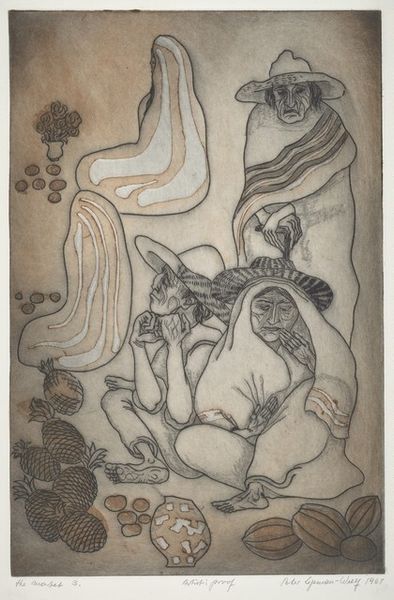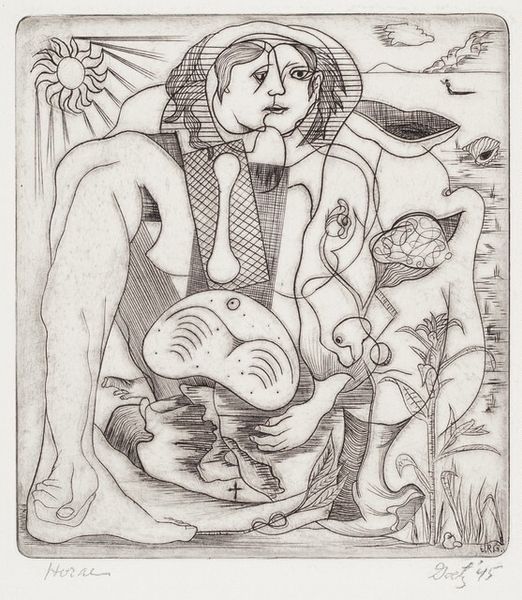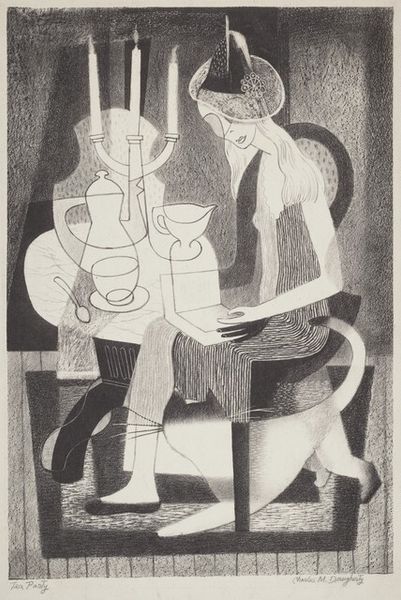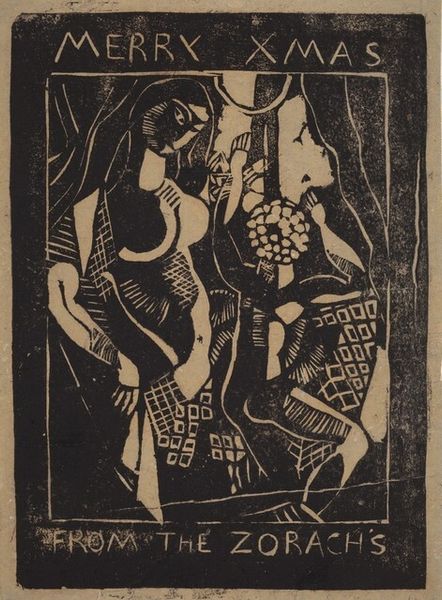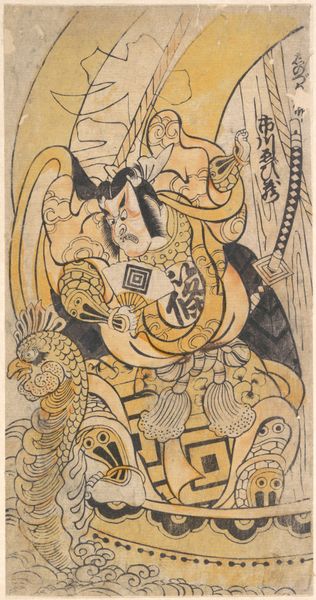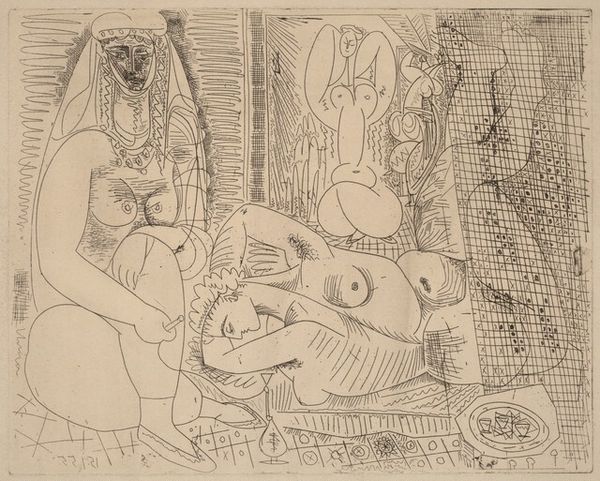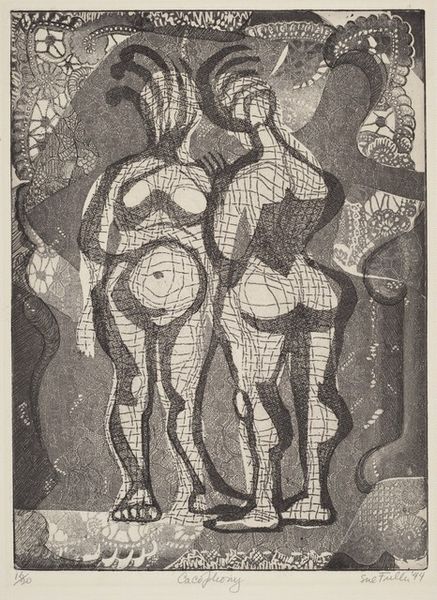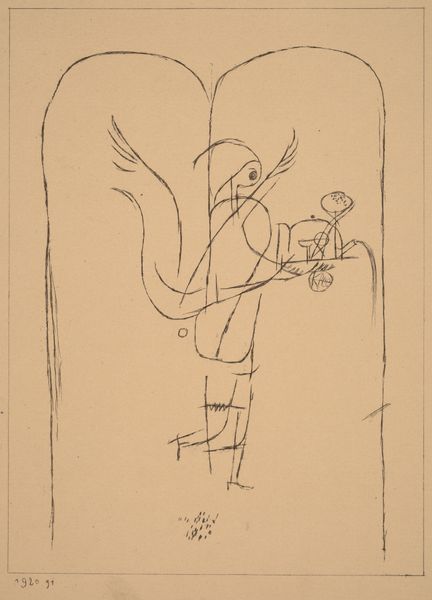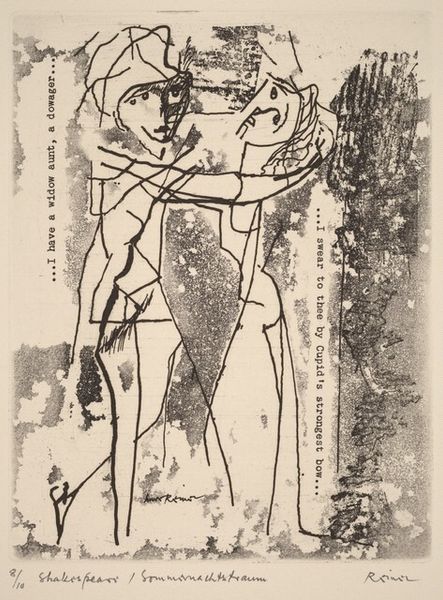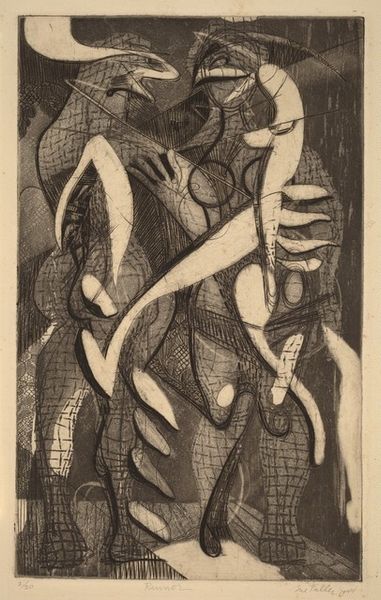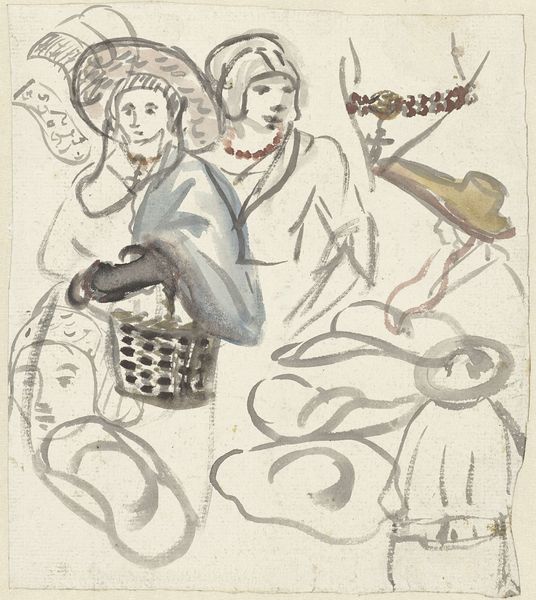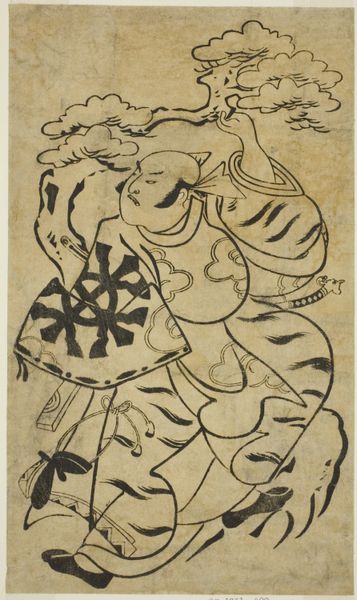![The Market [left side] by Peter Lipman-Wulf](/_next/image?url=https%3A%2F%2Fd2w8kbdekdi1gv.cloudfront.net%2FeyJidWNrZXQiOiAiYXJ0ZXJhLWltYWdlcy1idWNrZXQiLCAia2V5IjogImFydHdvcmtzLzg3YWU3NmY4LTdlYmYtNDhmYi1hMThkLTg2MDg1ZmE5NmIyMS84N2FlNzZmOC03ZWJmLTQ4ZmItYTE4ZC04NjA4NWZhOTZiMjFfZnVsbC5qcGciLCAiZWRpdHMiOiB7InJlc2l6ZSI6IHsid2lkdGgiOiAxOTIwLCAiaGVpZ2h0IjogMTkyMCwgImZpdCI6ICJpbnNpZGUifX19&w=1080&q=75)
drawing, print, ink
#
portrait
#
drawing
# print
#
landscape
#
figuration
#
ink
#
modernism
Copyright: National Gallery of Art: CC0 1.0
Curator: Immediately I’m struck by the almost ghostly quality, that faded sepia tone. It’s an echo, a memory… Editor: I see it too. It’s Peter Lipman-Wulf's “The Market," which I believe he created sometime in the 1960s, most likely. It is a print created using ink on paper. It’s so interesting how Lipman-Wulf combines figuration with these very stylized forms. Curator: Figuration barely scratches the surface! Those men, yes, they are "figures", but it's the dance around them that entrances. The pots at their feet feel earthy, grounded, and yet, above them, those amorphous shapes. Are they clouds? Thoughts? Spirits of markets past? They add a surreal quality that sets my imagination alight! And then there's that face tucked away in the uppermost form - such a beautiful detail. It seems the memory is quite vivid. Editor: Well, Lipman-Wulf’s personal story, marked by the Nazi regime and exile, clearly affected his artistic exploration, and the composition is not exactly accidental. Considering his interest in depicting the working classes, those ethereal shapes above could signify societal burdens and pressures weighing down these workers, their concerns, like heavy weather, lingering in the atmosphere above. Curator: Oh, heavy is right. They almost appear like specters—the expectations, the demands… looming large and oddly shaped! And, though you mention the working class—it's interesting. I wouldn't know immediately they're "at work"—more like carrying on a heritage or cultural connection to land and produce. Editor: It's fascinating how you draw out that theme. In many of his prints, the influence of modernism certainly contrasts against the cultural roots depicted here— the visual vocabulary almost speaks to his own displacement. It's both familiar and alien all at once. I wonder what a marketplace meant to Lipman-Wulf as someone exiled from their community. Curator: Perhaps that very combination is the appeal: familiarity cloaked in a foreign guise. Displacement not as sorrow, but as an invitation to reinvent. Editor: Exactly! To reclaim what’s his while creating new connections. This work, like history itself, constantly opens new perspectives, always subject to interpretation. Curator: An apt description indeed. This journey through Lipman-Wulf’s Market, and history with you, has been wonderfully invigorating.
Comments
No comments
Be the first to comment and join the conversation on the ultimate creative platform.
